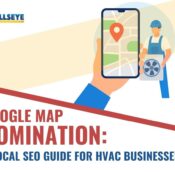
Boost User Experience – The Key to a High-Performing Synthetic Turf Website!
A high-performing synthetic turf website relies on excellent user experience. Prioritize fast-loading pages, mobile-friendly design, clear navigation, and engaging content to increase conversions, improve SEO, and keep visitors engaged—ensuring your turf business stands out online.
Call Now For The Expert Digital Marketing Solutions: 561-277-0148
Creating an exceptional Synthetic Turf Website Design isn’t just about aesthetics; it’s about delivering a user experience that converts visitors into loyal customers. In today’s digital-first landscape, the design of your turf website can make or break your business. This comprehensive guide explores everything you need to know to build a high-performing turf website that delights users, drives conversions, and dominates search engines.
Why Synthetic Turf Website Design Matters More Than Ever
First Impressions Count – Make Them Last
Visitors form an opinion about your turf website within milliseconds. A clean, modern, and intuitive design sets the tone and builds trust instantly. A poorly designed site, on the other hand, raises red flags and sends users bouncing elsewhere. Your website is the digital storefront of your business; make sure it reflects professionalism and quality.
Aligning Design with Business Goals
An effective Synthetic Turf Website Design should align closely with your business objectives. Whether your goal is to generate leads, showcase past projects, or offer e-commerce capabilities, your design should support those objectives seamlessly. Every page, image, and CTA should push users toward a specific action.
The UX Factor – How User Experience Drives Conversions
What is UX in the Turf Industry?
User Experience (UX) refers to the overall experience a user has when interacting with your website. Good UX ensures that users can navigate easily, find information quickly, and feel satisfied with their visit. In the turf industry, this means clear service descriptions, high-quality visuals, and easy contact options.
Turf Industry UX Best Practices You Can’t Ignore
Implementing Turf Industry UX Best Practices ensures a smooth and engaging experience:
Clear Navigation and Intuitive Layout
Menus should be clearly labeled, and pages should be organized logically. Avoid clutter and guide users with visual hierarchy.
Compelling Calls to Action (CTAs)
CTAs like “Get a Free Quote” or “Schedule a Consultation” should be prominent, persuasive, and placed strategically throughout the site.
Turf Business Website Optimization – Key Features for Success
Understanding Your Target Audience
Identify who visits your site: homeowners, commercial property managers, or sports facility operators. Customize your content and messaging to speak directly to their needs.
Homepage Design That Converts
Your homepage should feature a strong value proposition, compelling visuals, and immediate access to key information. Testimonials, certifications, and recent projects add credibility.
Visuals That Reflect Turf Quality and Professionalism
High-resolution images and videos showcasing your turf installations can significantly impact perception. Use visuals to tell a story and evoke trust.
SEO for Turf Business Sites – More Than Just Keywords
On-Page SEO Essentials for Turf Websites
Optimize your content with targeted keywords like Synthetic Turf Website Design, but don’t stop there. Include meta descriptions, title tags, alt texts for images, and internal linking to boost SEO performance.
Leveraging Local SEO to Attract Nearby Clients
Add your business to Google My Business, include location-based keywords (e.g., “synthetic turf installation in Phoenix”), and gather local reviews to rank better locally.
How UX Enhances Your SEO Rankings
Search engines favor websites that offer good user experience. Fast-loading pages, mobile compatibility, and low bounce rates all contribute to higher rankings.
Mobile-Friendly Turf Websites – The Need for Responsive Design
Why Mobile Optimization is a Must
With over 60% of internet traffic coming from mobile devices, a Mobile-Friendly Turf Website is no longer optional. A site that doesn’t render well on phones and tablets loses a significant chunk of potential clients.
Mobile UX Tips for Turf Business Owners
- Use larger buttons and readable fonts
- Ensure images and videos scale properly
- Simplify forms for easy mobile use
- Test across multiple devices and browsers
Increase Conversions for Turf Sites with Smart UX Tactics
Optimizing Forms for More Leads
Keep forms short and simple. Ask only for essential information, and offer incentives like free consultations or downloadable turf guides.
Using Trust Signals Like Testimonials and Certifications
Feature client reviews, industry certifications, and before-and-after photos to build credibility and trust.
Creating Landing Pages That Sell Synthetic Turf Solutions
Design landing pages for each major service or target audience. Use persuasive copy, relevant images, and a clear CTA to drive conversions.
Fast-Loading Turf Webpages – Speed Equals Profit
Turf Website Speed Optimization Strategies
A slow website frustrates users and harms your SEO. Implement the following Turf Website Speed Optimization techniques:
Compressing Images Without Sacrificing Quality
Use tools like TinyPNG or WebP formats to reduce file size while maintaining clarity.
Minimizing JavaScript and CSS Bloat
Remove unnecessary code, use asynchronous loading, and consider a content delivery network (CDN) for faster performance.
Choosing the Right Hosting Platform
Invest in quality hosting that offers solid uptime, fast load speeds, and scalability.
Best Themes for Turf Websites – Design Meets Function
Features to Look for in a Theme
When choosing the Best Themes for Turf Websites, prioritize:
- Mobile responsiveness
- SEO optimization
- Easy customization
- Fast loading times
- Built-in galleries and contact forms
WordPress vs. Custom Design – What Works Best?
WordPress themes offer flexibility and cost-effectiveness, while custom designs provide uniqueness and advanced features. Choose based on your budget and business needs.
User Engagement for Turf Sites – Keeping Visitors Hooked
Interactive Elements That Engage Users
Add features like cost calculators, virtual turf previews, or interactive maps to boost engagement and encourage exploration.
Integrating Blogs, Galleries, and Videos
Consistent content creation not only improves SEO but also positions your brand as an industry expert. Include how-to videos, case studies, and blog posts about turf care tips.
Bonus: A Checklist for High-Performance Synthetic Turf Website Design
UX, Speed, SEO, and Mobile – All in One Place
- Clear navigation
- Fast loading speed
- Mobile responsiveness
- Strong CTAs
- SEO-optimized content
- High-quality visuals
- Trust signals and testimonials
Continuous Testing and Optimization
Use A/B testing, heat maps, and analytics to refine your Synthetic Turf Website Design. Test new layouts, headlines, and CTAs to identify what drives the best results.
Conclusion: Your Turf Business Deserves a Website That Performs
A top-tier Synthetic Turf Website Design is the backbone of your online presence. By focusing on UX, SEO, mobile optimization, speed, and engaging content, you can transform your website into a powerful lead-generation machine. Remember, your website is more than just a digital brochure—it’s a 24/7 salesperson working to grow your turf business.
FAQs
What makes a synthetic turf website design effective?
A combination of fast load speeds, responsive design, clear CTAs, strong visuals, and optimized content ensures your site performs well and engages users.
How can I improve user engagement for turf sites?
Incorporate interactive tools, create regular blog content, use engaging visuals, and add testimonials to increase user time on site.
Are mobile-friendly turf websites really that important?
Absolutely. With most users browsing on mobile devices, a responsive design is essential for providing a seamless experience and boosting conversions.
How do I choose the best themes for turf websites?
Look for themes that are mobile responsive, SEO-ready, and customizable. Make sure they include essential features like galleries, contact forms, and blog layouts.
What tools help with turf website speed optimization?
Use tools like Google PageSpeed Insights, GTmetrix, TinyPNG for image compression, and CDNs to enhance your site’s performance.




